Why Are Argentina's Manufacturers Replacing Manual Handling with Pallet Inverters?
Are you watching your operational costs climb while productivity stays flat? In Argentina's competitive manufacturing landscape, many business owners I speak with are facing this exact problem. You invest in skilled labor and quality materials, but outdated processes like manual pallet handling create bottlenecks, risk worker injuries, and lead to product damage. It's a constant drain on resources and a barrier to growth. What if there was a straightforward, mechanical solution that could address these challenges head-on, unlocking new levels of efficiency and safety?
Argentine manufacturers are replacing manual handling with pallet inverters because they offer a direct and effective solution to critical business challenges. These machines drastically cut labor costs, significantly improve worker safety by eliminating strenuous lifting, speed up logistics and pallet exchange processes, and reduce costly product damage. This single investment boosts productivity, enhances operational efficiency, and provides a rapid return on investment, making it a strategic choice for modernizing factory floors.
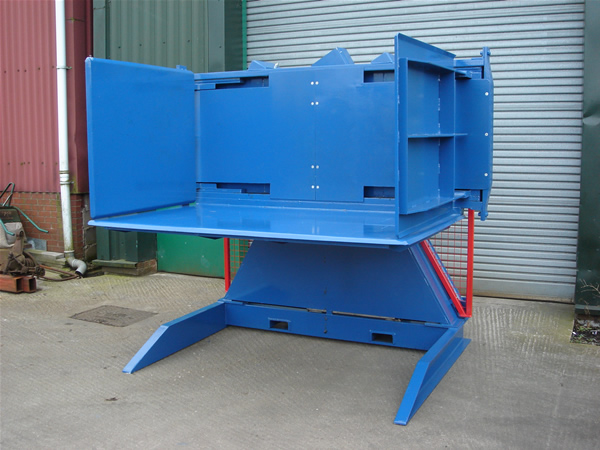
I’ve been in the packaging machine industry for a long time, first as an engineer and now as a factory owner myself. I understand the pressure to make every investment count. You're not just buying a piece of equipment; you're solving a problem. The shift towards pallet inverters in Argentina isn't just a trend; it's a calculated business decision. Let's break down exactly how this equipment solves the real-world problems you face every day.
How Can Pallet Inverters Directly Tackle Rising Operational Costs?
Are labor expenses and the cost of damaged goods eating into your profits? Every time a product is damaged during handling or a team has to manually transfer goods from one pallet to another, money is walking out your door. This manual process is slow, inefficient, and exposes your products to unnecessary risks. The financial bleed from these seemingly small issues adds up, making it harder to compete and invest in growth.
Pallet inverters directly tackle rising operational costs by automating the pallet exchange process. This immediately reduces the need for multiple workers to perform a single task, slashing labor expenses. Furthermore, their gentle and controlled handling mechanism minimizes the risk of product damage during transfer, saving significant money that would otherwise be lost to write-offs and replacements. By making the process faster, they also increase overall throughput, allowing you to do more with less.
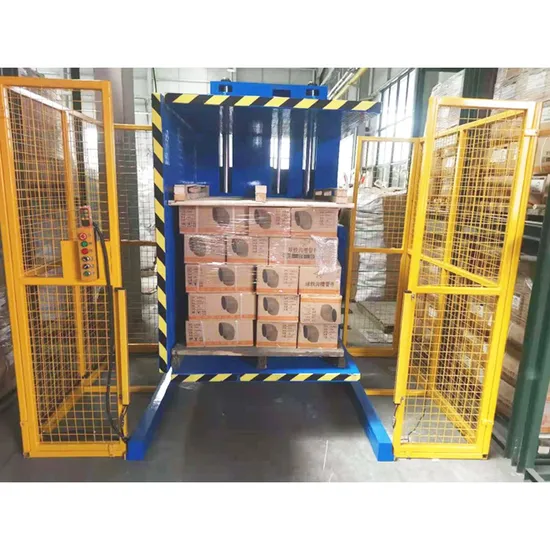
When I built my own factory, SHJLPACK, I learned that controlling operational costs is not just about negotiating with suppliers. It's about optimizing every single process on your floor. Manual handling is one of the most deceptively expensive activities in a factory. Let's look closer at the numbers.
Analyzing the True Cost of Manual Handling
Many factory owners I work with track direct labor costs, but they often overlook the hidden expenses. Manual pallet swapping isn't just about wages; it's a bundle of costs that a pallet inverter can eliminate.
| Cost Factor | Manual Handling | With Pallet Inverter | Impact |
|---|---|---|---|
| Labor Requirement | 2-4 workers | 1 operator | 50-75% reduction in labor for the task |
| Time per Pallet | 5-10 minutes | < 1 minute | 80%+ increase in speed |
| Product Damage Rate | 1-3% (or higher) | < 0.1% | Near elimination of handling damage |
| Injury Risk | High | Very Low | Reduced insurance and compensation costs |
From Direct Labor to Total Operational Savings
The most obvious saving is in labor. If you pay a worker a certain amount per hour, and a task takes four people ten minutes, the cost is substantial. A pallet inverter allows one person to do the same job in under a minute. The math is simple and compelling.
But the savings go deeper. Consider product damage. When your team manually flips or transfers a heavy load of steel coils, boxes, or bags, the risk of dropping or crushing items is high. Each damaged product is a total loss. A pallet inverter secures the load and rotates it smoothly, virtually eliminating this risk. For one of my clients in the steel industry, reducing handling damage saved them over $30,000 in the first year alone. This is a direct contribution to the bottom line.
Finally, think about indirect costs. Fewer workplace injuries mean lower insurance premiums and no lost workdays. Faster processing means your forklifts and operators are freed up for other tasks, improving overall facility flow. You are not just buying a machine; you are buying efficiency that radiates across your entire operation.
What Is the Real Impact of Pallet Inverters on Worker Safety and Productivity?
Do you worry about the physical toll that manual labor takes on your team? Back injuries, strains, and repetitive stress injuries are common in industrial settings. These incidents are not only tragic for the employee but also create a major problem for the company. They lead to lost time, increased insurance costs, and a drop in team morale, which ultimately hurts productivity.
The real impact of pallet inverters is a dramatic improvement in both worker safety and productivity. By taking over the dangerous task of manually lifting, tilting, and restacking heavy loads, these machines eliminate the primary cause of musculoskeletal injuries. This creates a safer work environment. As a result, productivity increases because the process becomes faster, more consistent, and less dependent on the physical endurance of your team.
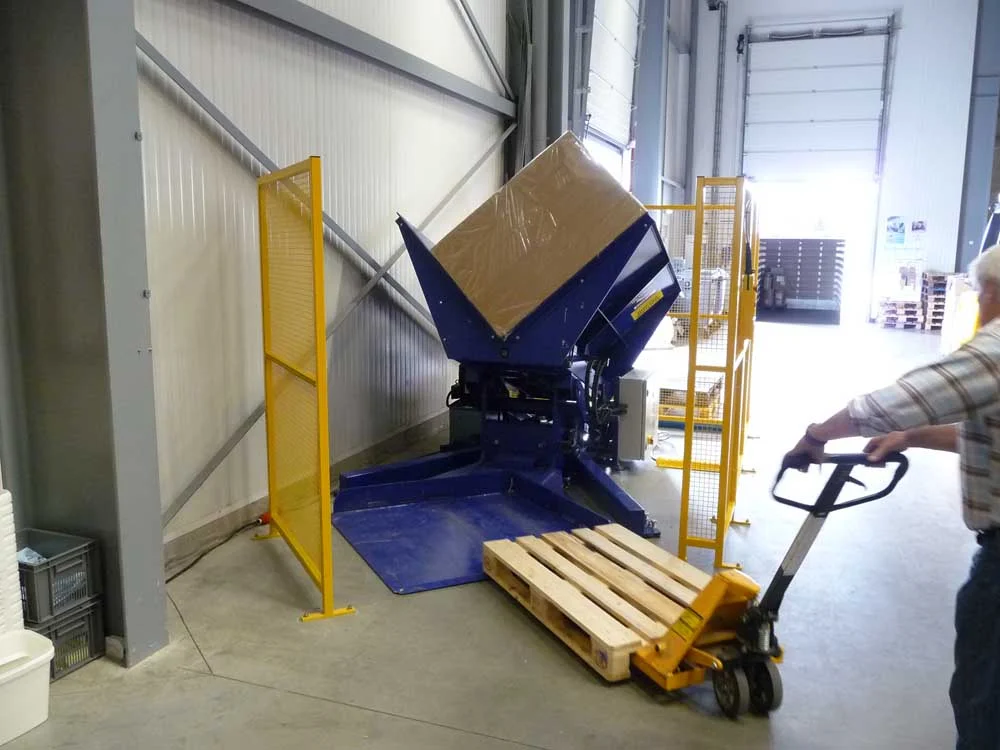
When I started as a young engineer, I saw firsthand how physically demanding factory work can be. I also saw how a single injury could impact an entire production line. That experience taught me that investing in safety is not an expense; it's an investment in your people and your output. A safe team is a productive team.
Creating a Safer Work Environment
The core function of a pallet inverter is to remove the human from the most dangerous part of the handling equation. Manual handling of a full pallet load often involves bending, twisting, and lifting—all classic movements that lead to injury.
- Eliminating Manual Lifting: A pallet inverter uses hydraulic or electric power to lift and rotate loads that can weigh over two tons. This is a task that should never be attempted manually.
- Ergonomic Operation: The operator typically controls the machine from a safe distance using a simple push-button panel or remote control. There is no physical strain involved.
- Reducing Repetitive Strain: Even with lighter loads, the repetitive nature of manual stacking and unstacking can lead to long-term injuries. Automating this process protects your workers' long-term health.
Turning Safety into Measurable Productivity
A safer process is almost always a more productive one. The connection is direct and easy to measure.
| Metric | Manual Handling | With Pallet Inverter | Productivity Gain |
|---|---|---|---|
| Consistency | Varies by worker strength/fatigue | 100% consistent cycle time | Predictable output |
| Pallets per Hour | 6-12 (with a team) | 30-60 (with one operator) | 400%+ improvement |
| Required Breaks | High due to physical exertion | Low | Increased effective work time |
Think about the flow of your production line. A manual pallet-swapping station is often a bottleneck. It's slow and unpredictable. When one worker gets tired, the whole process slows down. A pallet inverter provides a consistent, predictable cycle time, every time. This allows you to better plan your downstream and upstream logistics. I helped a food processing plant in Argentina integrate a pallet inverter, and they were able to reassign the three workers from that station to higher-value roles in quality control and packaging. The result: higher output and better product quality, all while creating a safer workplace.
How Do Modern Pallet Inverters Address the Challenge of Aging Equipment?
Is your factory relying on equipment that has been running for 15 or 20 years? Aging machinery is a huge liability. It breaks down more often, spare parts are hard to find, and it lacks the safety and efficiency features of modern technology. Relying on it feels like a ticking time bomb, where any day could bring a costly, production-halting failure.
Modern pallet inverters directly address the challenge of aging equipment by offering a reliable, low-maintenance, and robust replacement for outdated handling methods. Built with modern components and superior engineering, they provide consistent uptime and dramatically reduce the risk of unexpected breakdowns. Their simple, durable design ensures a long service life with minimal intervention, making them a dependable asset in any production line.
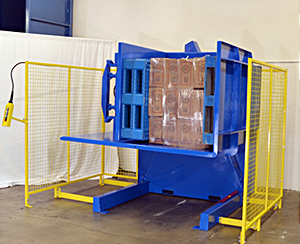
I've walked through hundreds of factories, and I see the same story everywhere. A company has a core production line that is solid, but the auxiliary equipment around it is failing. The cost of a full line replacement is too high, so they live with the constant headaches of an old pallet wrapper or a manual handling process. A pallet inverter is a strategic, affordable upgrade that can solve a major point of failure.
Reliability by Design
The difference between a 20-year-old machine and a new one is night and day. Modern engineering focuses on reliability and ease of maintenance.
- Robust Construction: We build our machines with high-grade steel and reinforced frames designed for continuous, heavy-duty use. The focus is on durability, not just function.
- Simplified Systems: While they may seem complex, the core systems of a pallet inverter are straightforward. They typically use reliable hydraulic power packs and simple electrical controls. There are fewer moving parts to fail compared to more complex custom automation. This simplicity is a key feature, not a bug.
- Quality Components: We use globally recognized brands for key components like motors, pumps, and PLCs. This means that even if a part needs replacing years down the line, it will be easy to source anywhere in the world, including Argentina.
Lowering the Total Cost of Ownership (TCO)
When you keep an old machine running, you are not saving money. You are paying for it in other ways. Let's compare the TCO.
| Cost Component | Aging/Manual Process | Modern Pallet Inverter | Advantage |
|---|---|---|---|
| Initial Cost | $0 (sunk cost) | Investment Required | - |
| Maintenance | High & Unpredictable | Low & Predictable | TCO Reduction |
| Downtime | Frequent | Rare | TCO Reduction |
| Spare Parts | Hard to find, expensive | Readily available | TCO Reduction |
| Energy Use | Inefficient | Highly Efficient | TCO Reduction |
Investing in a new pallet inverter is not just about replacing a function. It is about trading unpredictable expenses and downtime for reliability and peace of mind. For a plant manager, knowing that your handling station will work every single time is invaluable. It allows you to focus on bigger strategic goals instead of constantly putting out fires. It’s a manageable investment that solves an outsized problem, making it a smart first step in any factory modernization plan.
Can Pallet Inverters Integrate with Digital Transformation Goals?
Are you planning to implement a smart factory with MES, IoT sensors, and data analytics? Many leaders I speak with, like Javier in Mexico, are pursuing this digital transformation. A major concern is how traditional, standalone machinery fits into this connected ecosystem. A "dumb" machine can become a black hole in your data stream, making it impossible to get a complete picture of your operations.
Yes, modern pallet inverters are designed to integrate seamlessly with digital transformation goals. They can be equipped with PLC controls and communication modules that allow them to connect directly to your MES (Manufacturing Execution System) and IoT platforms. This enables real-time data collection, remote monitoring, and automated control, turning the inverter from a standalone machine into an intelligent node in your smart factory network.
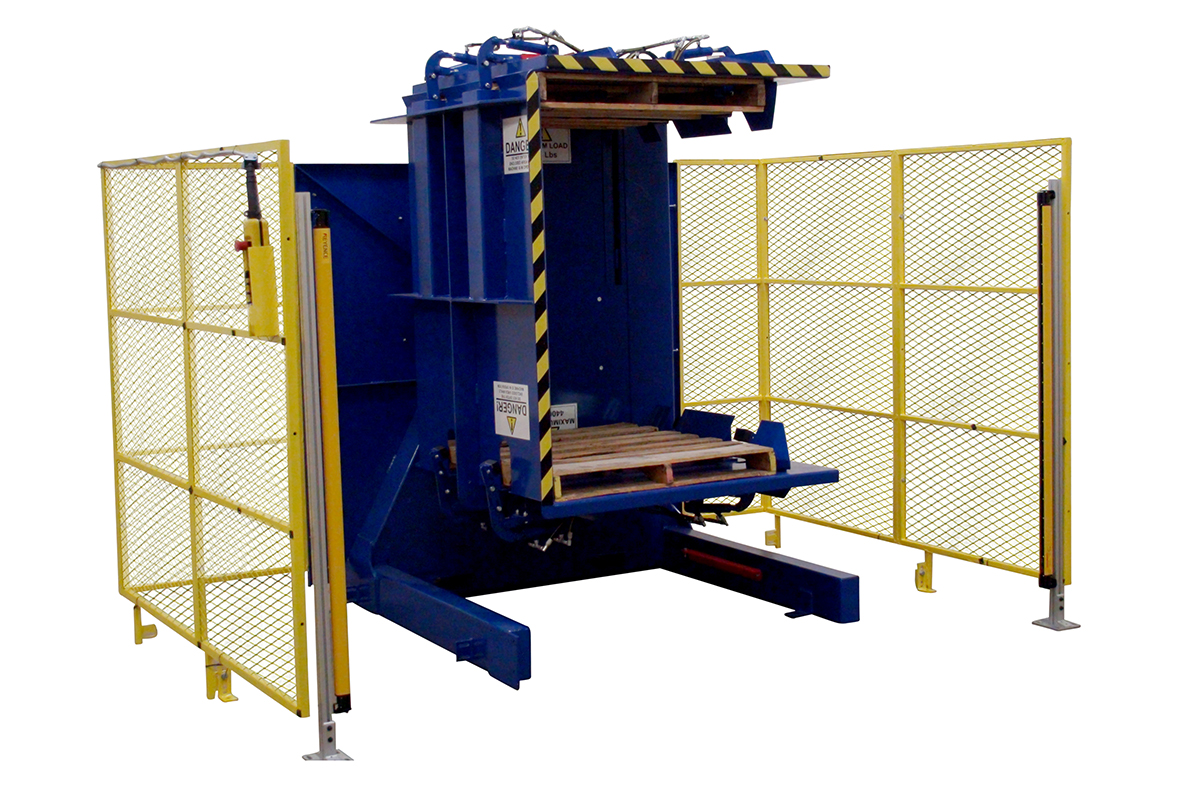
When I founded SHJLPACK, my vision was not just to build machines, but to provide total solutions. Today, a total solution must include data. A machine that cannot communicate is a machine that belongs in the past. Your goal of achieving comprehensive production visualization is exactly why we design our equipment to be "smart-ready."
Connecting to Your Factory's Brain (MES)
A pallet inverter doesn't have to operate in isolation. By integrating a PLC (Programmable Logic Controller) with an Ethernet/IP or ProfiNet communication card, the machine can talk to your central system.
- Sending Status Updates: The inverter can tell the MES when a cycle starts, when it ends, and if there is any fault. This information is crucial for calculating Overall Equipment Effectiveness (OEE).
- Receiving Commands: In a fully automated line, the MES can send a signal to the inverter to begin its cycle once a pallet is detected in position from an upstream conveyor.
The Power of IoT Sensors for Predictive Maintenance
This is where things get really powerful for a forward-thinking owner. By adding simple sensors to the pallet inverter, you can gather data that helps you move from reactive maintenance to predictive maintenance—a key goal for any modern factory.
| IoT Sensor | Data Collected | Strategic Value |
|---|---|---|
| Cycle Counter | Number of rotations | Tracks usage for scheduled maintenance |
| Motor Amperage Sensor | Electrical current draw | An upward trend can predict motor failure |
| Hydraulic Pressure Sensor | System pressure levels | A drop can indicate a leak or pump wear |
| Vibration Sensor | Machine vibration patterns | Changes can signal bearing wear or misalignment |
This data, fed into your analytics platform, allows you to fix problems before they happen. Imagine getting an alert that your inverter's motor current is slowly rising, allowing you to schedule maintenance during a planned shutdown instead of having it fail during a critical production run. This is how you achieve 95% uptime. It turns a simple piece of equipment into a valuable data source for your entire digital strategy.
My Insights
When I speak with steel mill owners and manufacturing leaders like Javier Morales, I hear a consistent set of challenges: rising costs, aging equipment, and the pressure to modernize. They are not looking for a simple machine; they are looking for a strategic advantage.
And that’s what I want you to see in the pallet inverter. Don't just view it as a device for flipping loads. Look at it through the lens of your biggest operational goals.
- Goal: Lower Operating Costs by 8%. A pallet inverter directly attacks this by cutting labor, eliminating product damage, and reducing the hidden costs of worker injuries. It’s one of the fastest ways to get a return on a capital investment.
- Goal: Increase Capacity Utilization to 95%. By replacing a slow, unreliable manual process with a fast, automated one, you remove a critical bottleneck. And by integrating it with IoT for predictive maintenance, you ensure it runs when you need it to run.
- Goal: Advance Digital Transformation. This machine is not a dead end for your data. It’s a new source. It provides the tangible, real-world data points you need to make your MES and analytics platforms truly effective.
I remember a client in the metals industry who was facing these exact issues. He was skeptical at first, seeing the inverter as just another piece of equipment to maintain. But he took the step. Three months later, he called me. He said the biggest change wasn't just the speed of pallet swapping. It was the end of safety complaints from his team. It was the ability to finally track throughput accurately at his packaging station. It was a small key that unlocked a much bigger door to operational excellence.
My mission with SHJLPACK isn't just to sell machines. It's to share the knowledge I gained building my own successful factory. A pallet inverter is a perfect example of a smart, targeted investment that solves multiple problems at once. It’s the kind of practical, high-impact solution that turns a good factory into a great one.
Conclusion
Argentine manufacturers adopt pallet inverters because they are a multi-faceted tool for modern industry. They directly boost profitability, safety, and efficiency, providing a clear path to modernization.



